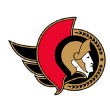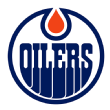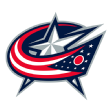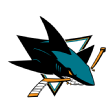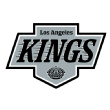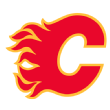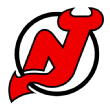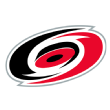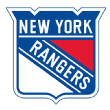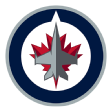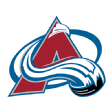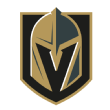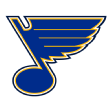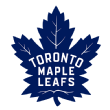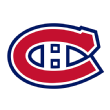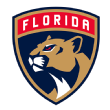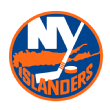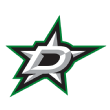Goalie tandem rankings for all 31 NHL teams for 2019-20

Our position ranking preview series continues as we look at the most important group of all, the goalies. Even more so than the others, there's many different things to consider when discussing this position.
Contrary to the idea in football that "if you have two quarterbacks you have none," NHL hockey is changing, and it's become vital not to be overly reliant on just one workhorse netminder. Having a strong pair is now the name of the game.
The tricky thing about evaluating the position is separating the performance of the goaltender from the defense and coaching in front of them. You don't want to heap all of the praise on a goalie playing behind a stingy, well structured team, and you also don't want to completely bury a goalie that's being hung out to dry by their skaters.
With that in mind, let's count down the goalie groups around the league from 31 to 1:
Jump to a team:
ANA | ARI | BOS | BUF | CGY | CAR | CHI
COL | CBJ | DAL | DET | EDM | FLA
LA | MIN | MTL | NSH | NJ | NYI
NYR | OTT | PHI | PIT | SJ | STL
TB | TOR | VAN | VGS | WSH | WPG
31. Ottawa Senators
Mirroring the rest of the Senators organization, it's been an awfully rough two seasons for Craig Anderson since his special 2016-17 performance. He's struggled to keep his head above the .900 mark in save percentage, and that's probably going to be the case again in 2019-20. He's carved out a genuinely impressive career for himself, but it wouldn't be surprising if this was it for him, considering his age and contract status.
Anders Nilsson was actually decent and had some strong performances after being acquired during the season, but we've seen this act from him enough times to be able to sniff it out and not buy into it. And even if that wasn't the case and he was legitimately good, it would be tough to sustain it behind this defense. There's going to be a lot of shots against, a lot of premium scoring chances, and plenty of goals against.
Anderson and Nilsson aren't going to be around by the time this franchise is competitive again, but I can see why they wouldn't want to subject prospects Marcus Hogberg or Filip Gustavsson or any other young goalie to this type of a morale-crushing situation.
30. Edmonton Oilers
The Mikko Koskinen contract extension was a fitting final act for Peter Chiarelli's glorious time in Edmonton, serving as one final stink bomb for someone else to have to try to clean up after him. Months later, it still seems surreal that an NHL team gave a 31-year-old with 31 career games at this level a three-year deal worth $13.5 million. It's tough to say what the best part was in hindsight: the idea that they needed to rush to do so during the season because there'd be other suitors lining up for a bidding war in the summer, or that Chiarelli was allowed to execute the negotiation before promptly being fired two days later.
After starting the season on a high note, Koskinen was a mess, completely falling apart in the second half as the Oilers mercilessly rode him into the ground because of a combination of not having better options and trying to justify their impulse buy. He had a .901 save percentage in 28 games following the extension.
Their brilliant idea to help shore things up in net this summer was to bring in 37-year-old Mike Smith, who is coming off a season when he was 53rd in save percentage (.898) and 47th in goals saved above average (-6.16) out of 60 qualified goalies, all while playing behind a significantly superior team. What could possibly go wrong?
29. Columbus Blue Jackets
I admire the way the Blue Jackets are handling their goalie situation this season. After Sergei Bobrovsky left in free agency, they fully embraced their new reality and will now attempt to find their next netminder organically from within the organization. Instead of taking a half measure and bringing in some recycled backup with a limited upside because that's what conservative NHL teams typically do, they're instead going to see what they have with a couple of unproven but intriguing young goalies.
Joonas Korpisalo has never really lived up to all of the prospect hype that made him one of the "next big things" in net in the eyes of evaluators, but he's still only 25 and has never really gotten a consistent look because of how much of the work Bobrovsky soaked up. It's impossible to know how numbers from the Swiss League will translate, but Elvis Merzlikins looks like an electric young player who's dominated all of the competition he's ever faced. There's more substance to him than just the name, but boy is the name ever good in and of itself. The Blue Jackets have Veini Vehvillainen and Daniil Tarasov in the pipeline, but both of them are a ways away.
It's tough to rank them highly heading into the season because of how much of an unknown they are at the moment, but there's legitimate upside, and that's more than we can say about a lot of other teams in this neighborhood.
28. Buffalo Sabres
Good for Carter Hutton. He made the NHL for the first time as a 29-year-old after signing as an undrafted free agent, and parlayed a hot 30-game stretch behind the Blues defense into a nice payday; he played 50 games in a season for the first time as a 33-year-old. That's not a career trajectory you'll see that often.
His numbers last season took a hit, but it's unfair to lay the blame on him considering how dreadful the Sabres group in front of him was during the second half of the season. I'd like to see them give Linus Ullmark more run to see what they have in him, because we already know what Hutton is at this point. But in reality, both guys are just keeping the seat warm until 20-year old Ukko-Pekka Luukkonen is ready to shine.
27. Detroit Red Wings
I'm still waiting for a coherent explanation for why the Red Wings felt compelled to give Jonathan Bernier a three-year, $9 million deal in the first place. The only interesting thing here will be following how Jimmy Howard plays early on, and if he does well, which contender goes out and trades for him to fill a need in net. A team like the Sharks makes a lot of sense, but there's plenty of time between now and then.
The only thing we do know is that he will likely be traded at some point, barring injury. The one-year extension he signed doesn't contain any type of trade protection, and provides him with a $1.1 million playoff bonus. A future deal has never been telegraphed more clearly.
26. San Jose Sharks
I feel bad for crushing Martin Jones, because he's in an unenviable position.
Goalies playing for great teams really get the short end of the stick. They're expected to play well, and if the team wins it's because of all the talented skaters they have. But if they waver for a second and the team falls short of expectations, the fingers immediately get pointed at the goalie as every single mistake they made gets overanalyzed. The other caveat is that the Sharks make it difficult on a goalie because of the attacking style of game they play. They're aggressive, they're always pushing the envelope, and as a result they often surrender a lot of odd-man rushes and scoring chances coming back the other way.
All of that said, Jones wasn't remotely good enough last season. His .896 save percentage was ugly, and his -5.95 goals saved above average was just 46th out of 60 qualified goalies. For a team with Stanley Cup aspirations and for a goalie making $5.75 million annually, he needs to be better. Especially since the bar that this team needs to clear with its offense is so low. Even something hovering around league average would likely be good enough to push them over the top. Being a league-worst 31st in save percentage at 5-on-5 as well as all situations won't get it done.
25. Los Angeles Kings
Let's play a little blind résumé game from last season:
- Player A: 46 games played, .887 save percentage, -31.42 goals saved above average
- Player B: 42 games played, .926 save percentage, +12.56 goals saved above average
Player A had a $5.8 million cap hit and made $7 million in real dollars last season, and will continue to do so this season. Player B is actually two players combined, who combined to make $1.6 million. Player A is Jonathan Quick, and Player B is an amalgamation of Jack Campbell and Cal Petersen's stats.
We'll give Quick the benefit of the doubt because he was actually really good in 2017-18, and has been consistently above average even if he's been perennially overrated by his biggest defenders. But considering that he's turning 34 years old this season and playing for a team that's in full rebuild mode, the Kings are in a bit of a tricky situation when it comes to how they're going to divvy up their starts in net. You want to be respectful to a player that's done so much for your organization and is still a fan favorite, but you also want to get more looks at what you have in two younger and cheaper alternatives. Especially if they're going to kind of outperform the older option.
24. Minnesota Wild
No goalie was used more heavily than Devan Dubnyk was last season, and only Frederik Andersen and Sergei Bobrovsky have more total games to their names in the four seasons since he became a full-time starter in Minnesota. His statistical résumé last season is one of the more topsy-turvy ones of any goalie because of the imbalance between his traditional metrics and his underlying ones.
On the surface, he had a .913 save percentage, which was above league average. When you look at his goals saved above average, his -16.64 that he cost the Wild was 59th out of 60 qualified goalies, ahead of only Jonathan Quick. The explanation for that is that Corsica's model loved Minnesota's defensive stats as a team, having them at a league best expected goals against clip for the season.
The true measure of his performance is likely closer to the former because it's hard to believe that he was the second most negatively impactful goalie in the league, but it's an interesting disparity nonetheless. His actual talent level at this point of his career is somewhere around league average if not slightly above. The weird thing is the Wild's choice to attach themselves to Alex Stalock as his backup, because it presents next to no upside. I get why teams like Minnesota opt to do that -- allowing younger options like Kaapo Kahkonen to play full time in the AHL rather than sitting on the bench in the NHL and not being able to fully develop -- but it's still too safe, in my opinion.
23. Calgary Flames
David Rittich's first season in the NHL with anything close to a full workload can really be neatly broken down into two segments:
- Before the All-Star break: 30 games, .918 save percentage
- After the All-Star break: 15 games, .898 save percentage
If you're a glass-half-full type of person, you can chalk those splits up to a goalie that struggled adjusting to the physical and mental rigors of a full NHL season. If you're a glass-half-empty type of person, he was playing over his head in the beginning and eventually the league figured him out.
The Flames clearly seem to be in the camp of the former, because they chose to bring him back on a two-year deal without any real threat to his gig. With all due respect to Cam Talbot, he's had an awfully rough go of it the past two years after the Oilers blatantly rode him into the ground by playing him 80 times in a single season. Edmonton and Philadelphia weren't exactly the best situations in that time, so it makes sense that Calgary would be betting that they could salvage something productive out of him on a low-risk, one-year deal. The contract itself is low risk, but the decision to go this route with their goaltending is quite the opposite. The Flames should once again be considered a contender based on the talent of their roster, but there's quite a few question marks that still need to be answered in net before we can feel confident about them.
22. Philadelphia Flyers
Considering the history there, being tasked with the job of single-handedly putting an end to the goalie carousel in Philadelphia would be a daunting one for anyone. Especially for a 20-year-old with zero NHL experience coming in. But Carter Hart looked unphased by the entire situation last season once he was finally called up, and showed more than enough to inspire hope that the Flyers have finally found their guy.
The final stat line of a .917 save percentage over 31 games doesn't seem overly special, but when you account for the situation he was thrown into and how things were going before he got there (and that it was brought down by a couple of ugly isolated showings to end the campaign), it represents a massive improvement overall. After having to try out seven different goalies before they even got to him, just a little bit of consistency would go a long way in Philadelphia.
21. New Jersey Devils20. Vancouver Canucks
These two teams belong together because they enter the season with similar situations in net. They each have a starting goalie who appeared to be a lost cause before ending last season in strong fashion, and young backups who have the pedigree and look like they're ready for a larger piece of the pie.
The Cory Schneider story is interesting. The Devils goalie used to be one of the most reliable goalies in the league before injuries sapped him of his abilities. Considering that he posted save percentages south of .910 in back to back seasons and went 14 months without a win, it was fair to wonder whether this was it for him at age 33. But by all accounts he's finally healthy now, and had a .921 save percentage in 17 games after the All-Star break.
Jacob Markstrom is younger and his situation was never as bleak, but he'd also never achieved the heights Schneider had nor the expectations people had for him when he broke into the league. His overall numbers last season for the Canucks were nothing special, but he similarly had a .920 save percentage in 23 games following the All-Star break. You don't want to throw away years of evidence after just 20-some-odd games, but if the reports that he fundamentally changed his game and the results followed are true, then there could be something here.
As for the backups, the Devils' Mackenzie Blackwood has proven more in the NHL, but Thatcher Demko was considered to be a better prospect coming up and had better numbers in the AHL before being called up. It remains to be seen just how many starts they'll each get this season, but considering all of the question marks about the goalies ahead of them on the depth chart, they should be remain ready for their call.
19. Carolina Hurricanes
Just like with pretty much everything else about this team, the Hurricanes' situation in net is a fascinating one. There's not many franchises that would be as gleeful about having the 14th best save percentage at 5-on-5 and 16th best overall as they are, but after what they had been through over the years, those figures represented a seismic leap in quality.
Maybe the most surprising part was the source of it however, considering that they had scooped Curtis McElhinney off waivers and signed Petr Mrazek to a one-year deal when no one else really wanted him. Considering how much their performances meant to the team, you would've understood if they'd been emotionally attached to the situation, potentially even overpaying just to bring the band back together. Instead they let McElhinney walk, lost goalie coach Mike Bales, and retained Mrazek on another below market two-year deal.
They replaced McElhinney with James Reimer, who fits the bill of a reasonable reclamation project. There clearly wasn't going to be room for him in Florida after the Panthers decided to go big on Bobrovsky, but they'd presumably already soured on him after his disappointing performance last season. I'm willing to give Reimer some leeway on that, because the situation in front of him was so bad that it was impossible for any goalie to really shine in that environment. He comes into a much better situation, one where he could conceivably steal the starting job if he regains his form. From the Hurricanes' perspective, the logic behind the moves completely checks out, and they made the most out of the cards they had in front of them. But as always, if there's one thing that's going to get in the way of Stanley Cup contention, it'll be the goaltending.
18. New York Rangers
There was once a time when the only three constants in life were death, taxes, and Henrik Lundqvist finishing the season with a save percentage above .920. It's been three seasons now since he's done that, but I won't completely attribute that downswing to his own decline. As he gets closer and closer to 40 years old and 1,000 career games played, the margin for error certainly continues to shrink, but I suspect the deteriorating supporting cast in front of him had a lot to do with it too. Even with the save percentages dipping, he's still been an above average netminder for the majority of that time when you account for the quantity and quality of shots to which he's been subjected.
What's interesting is that he actually had a .920 save percentage for the first two months of last season before they threw in the towel and starting trading talent away. Even if the roster is still a work in progress, the additions of Jacob Trouba and Adam Fox will help. As will forwards like Artemi Panarin and Kaapo Kakko, who should do wonders for the team's possession game and keeping the puck out of the defensive zone.
It would be great for Lundqvist to have one last consequential chapter to his NHL story, but if this is it, let's just appreciate the insanely consistent excellence we've been treated to over the past decade-plus from him. To put the sheer volume of it all in perspective, here's the leaderboard for cumulative goals saved above average since 2007:
Henrik Lundqvist: +220.03
Jaroslav Halak: +99.61
Cory Schneider: +93.69
Sergei Bobrovsky: +89.51
John Gibson: +87.96
Corey Crawford: +76.19
Roberto Luongo: +70.96
Frederik Andersen: +58.17
Carey Price: +57.19
Tim Thomas: +48.93
17. Washington Capitals
The Capitals are rapidly approaching a weird crossroads with Braden Holtby. He's been an exceptional goalie over the years, which includes being one of the best playoff performers of all time. But he's now coming off of two straight regular seasons in which his play has dipped, and he just turned 30 years old. He's up for a new contract next summer and would presumably like to cash in handsomely one last time while he still can.
The issue for Washington is that they're eventually going to have to start thinking about the next chapter for their franchise and what that will look like when this entire core is no longer around. Just based on logistics, Holtby may very well be the first one of that group to go. Especially if top prospect Ilya Samsonov can regroup after a poor first season in North America, and show that he is indeed the goalie of the future.
16. Pittsburgh Penguins
It was encouraging to see the way Matt Murray turned his season around after a rough start, considering the miserable season that followed. He had an .877 save percentage in 11 games out of the gate, eventually ceding the crease to Casey DeSmith and missing some time with injury.
Once he came back he was awesome, putting up a .930 save percentage in 39 appearances the rest of the way. It's strange to think that he's only 25 years old given how long he's been in our lives and the impact he's had in the league, but it's an important thing to remember as we look ahead for him.
15. Arizona Coyotes
The clock is ticking on Antti Raanta. It's hard not to be smitten with the talent and the numbers on a per-game basis. Since coming into the league in 2013 he has the sixth best 5-on-5 and fifth best all-situations save percentage. If you could bottle that ability up and sprinkle it over a full season, you'd have something special.
However, showing up is a big part of the battle, and in Raanta's case he just can't seem to stay on the ice for an extended period of time. The 47 games he played in 2017-18 represented the only time he's ever been north of 30 in a single season, and he's never gone over 50 at any point, dating back to his career overseas. Speaking of 30, he's now officially on the wrong side of it, which is why the opportunities to finally be the player everyone thinks he can be are dwindling.
The good news for the Coyotes is that they have a strong defensive system, and a more than serviceable backup in Darcy Kuemper should Raanta get hurt again. It would be silly to expect Kuemper to replicate his performance from last season, considering he's never done anything close to that before -- the 55 games he played were a career high by a significant margin, and his .925 save percentage and +11.48 goals saved above average were both comfortably in the top 10 league-wide -- but he should be fine if needed. It would just be less than ideal if they needed him as much as they did last season.
14. Winnipeg Jets
The Jets have a lot invested in the idea that Connor Hellebuyck is legitimately good and a lock to be their goalie of the future. They made sure of that when they bet big on him in the summer of 2018, after the team made it all the way to the Western Conference final and he finished second in Vezina Trophy voting. Year 1 of his pricey six-year, $37 million extension didn't go exactly according to plan, with Hellebuyck posting a very average .913 save percentage and -0.94 goals saved above average.
It didn't help matters that Laurent Brossoit played out of his mind, finishing with a .925 save percentage and +12.64 goals saved above average. Similar to how the backup quarterback is the most popular man in an NFL town, weird things happen when the starting goalie starts getting outplayed by his understudy. Considering how financially invested the team is in one of them compared to the other, don't expect their usage to be flipped any time soon. That said, Hellebuyck has a lot to prove this season, and he's got his work cut out for him with Winnipeg's depleted blue line.
13. Colorado Avalanche
The Avalanche let Semyon Varlamov walk in free agency this summer, and I think they're going to be just fine without him. Philipp Grubauer now becomes the starter, but he already took that job for himself during the stretch run last season. He was out of his mind in the final 25 games he played from March 1 on (including the playoffs), stopping 93.9% of the shots he faced and posting four shutouts. That's especially impressive considering that most of those games came against the Flames and the Sharks in the playoffs, two of the best offensive teams in the league.
It's slightly concerning that Grubauer has never played 40 games before in a regular season, but he might not have to play too much more than that this season if backup Pavel Francouz can keep doing what he's been doing his entire career. He may be an unknown in NHL circles, but he's a goalie who has been wildly effective at every stop thus far, whether it be the Czech league, the KHL or the AHL.
12. Vegas Golden Knights
He's been more than up to the task to this point, but it's a bit concerning how much the Golden Knights have relied upon Marc-Andre Fleury in the first two seasons of their existence, considering that he'll be 35 and reach 1,000 NHL games (including playoffs) this season. He's been excellent, but they haven't really been able to find a permanent source of quality starts on the nights he can't go:
- Fleury: 107 games, 64 wins, 12 shutouts, .919 save percentage, +20.65 goals saved
- All other Vegas goalies: 65 games, 30 wins, 2 shutouts, .898 save percentage, -20.3 goals saved
Malcolm Subban has shown flashes and he's still only 25 years old, but he's also running out of time to show that he's either the man for the job right now or someone who should firmly be in their plans once Fleury's usage inevitably needs to be dialed back. The Golden Knights are going to rip through the league this season and should be one of the most dominant 5-on-5 teams around. At this point, the only thing that can really slow them down appears to be Fleury's age, whether it be in the form of health or performance. Then again, there aren't too many teams out there that wouldn't have an issue if their No. 1 goalie went down.
11. St. Louis Blues
It feels weird to say that a player who finished second in Calder Trophy voting and led their team to a Stanley Cup has a lot to prove this season, but there will be a lot of eyes on Jordan Binnington to see how he follows up all of the success he enjoyed after bursting onto the scene.
As good as his regular season numbers look, and as huge as he was for the Blues when they needed him in big moments last postseason, it remains to be seen what his numbers will look like in Year 2 as the sample size grows and shooters get more tape on him. While it's not crazy on the surface to say that he's probably not a .927 save percentage goalie who posts a shutout one out of every six games like he did last regular season, the opinions of him and what his true talent level are vary wildly. It's worth noting that those numbers were largely inflated by a surreal 15 or so game stretch in January and February, after which he cooled off and posted a .912 save percentage in his final 12 regular season games from March 1 on.
What he has working for him is that he's in a great spot playing behind one of the best defensive teams in the league. That's why the Blues don't need him to be as good as he was last season, because they presumably won't dig themselves the same type of hole again. But they do need him to prove that he's a legitimately above average goaltender, because at this point I feel fairly confident saying that Jake Allen is not.
10. Chicago Blackhawks
Corey Crawford is a great goalie, but after he was only able to play 28 and 39 games in the past two seasons, it was imperative for the Blackhawks to find themselves a legitimate backup plan. Sending Cam Ward and Collin Delia out to the wolves 40-plus times again wasn't a palatable option.
Robin Lehner is an excellent contingency plan, coming off a special season with the Islanders. It'll surely be tougher sledding for him in Chicago, going from Barry Trotz's vaunted defensive system to a Blackhawks squad that had some issues under new coach Jeremy Colliton. They're hoping that a full offseason for the new coach to work with and implement his stuff, to go along with a couple of additions on the back end, will make a difference. It'll be hard for them not to be better defensively, but they'll still presumably need their goalies to bail them out more often than not.
This is a big season for Lehner. He didn't get the type of deal he wanted and thought he deserved this summer, and if he can prove that his play was legit and not just a byproduct of his surroundings, he'll be able to cash in big this time around.
9. Toronto Maple Leafs
You have to love Frederik Andersen and what he stands for in net. At a position that's known for its unpredictability and volatility from one season to the next, he's a stone cold lock for the same numbers every single season. That kind of consistency is really hard to come by, and it's admirable that he's able to go out and keep doing it time and time again. In his 300-plus games in the NHL, he has a .918 save percentage, and he's been somewhere between .917 and .919 in each of the past four seasons.
He's also started 60 or more games in each of his three seasons with the Leafs, which is becoming a rare feat in today's game. That said, the Leafs would do well to preserve him more carefully. No goalie has played more than he has since arriving. It's understandable why they're reticent to do so, however. The support in front of him can be a mess at times, and they haven't really been able to find a backup solution who can hold up well enough under that kind of fire.
While their playoff spot is safe and they can technically afford to give up a couple of extra points here and there if it'll mean a fresher version of Andersen in the postseason, they're also fighting with the Bruins and Lightning for the No. 1 seed in the Atlantic Division and an easier playoff path. Considering that no goalie had a bigger positive impact than Andersen, according to Evolving Wild's wins above replacement model, you can see why Mike Babcock wants to use him as much as he can.
8. Montreal Canadiens
No one must have been more relieved than Canadiens GM Marc Bergevin last season when Carey Price turned it around and started looking like a much closer version of the goalie who was widely considered to be the best at his position not too long ago. In the first year of his eight-year, $84 million extension, Price emphatically put an end to his personal skid that had lasted for about a year and a half, and was excellent in the second half of the season.
From January 1 on, he stopped 92.8% of the shots he faced in those 36 games, compared to the .904 save percentage he had in the first 30 games. Considering both the size of the franchise's investment and the quality of the offenses at the top of their division, they'll need that to continue this season if they want to stay in the playoff hunt.
7. Florida Panthers
The Panthers were an absolute abomination defensively last season. They were arguably the most hopeless team this side of Chicago in that regard, so it's not surprising that they completely overreacted and zigged when the rest of the league is zagging. During a time when teams have realized that the volatility and unpredictability of the goalie position makes investing too heavily in it a risky proposition, the Panthers went all-in this summer. They drafted a goalie in the lottery for the first time since 2010 (Spencer Knight, who will play for Boston College this season), and then spent $70 million on Sergei Bobrovsky in free agency.
While there's no question that it was a crazy contract that will more than likely wind up coming back to haunt them at some point down the road, there's also no doubt that Bobrovsky will help fix a lot of their woes in the short term. They were 30th in both 5-on-5 and all-situations save percentage, and that'll rise by a fair margin. Even if Bobrovsky's overall numbers were down last season, the final stretch and postseason showed that he still has it. Just how much of a difference he'll be able to make is the question, especially if the team continues its sloppy ways in front of him.
6. New York Islanders
While the switch from Robin Lehner to Semyon Varlamov might be more of a downgrade than people think, because the latter has been a bigger name than actual performer of late (in the past four years, he has a .913 save percentage and only one above-average campaign), all that really matters here is that the Islanders are bringing Barry Trotz and Mitch Korn back. Look at the difference in the team's numbers from one season to the next, and the immediate effect that the system and structure the two of them brought to town had on the Islanders:
2017-18:
30th in 5-on-5 goals against
30th in 5-on-5 expected goals against
26th in 5-on-5 save percentage
31st in total goals against
30th in total expected goals against
28th in total save percentage
2018-19:
2nd in 5-on-5 goals against
7th in 5-on-5 expected goals against
1st in 5-on-5 save percentage
1st in total goals against
11th in total expected goals against
1st in total save percentage
They'll be a great test case for the argument that goalies are the NHL equivalent of running backs when it comes to the ability to plug and play as long as the right infrastructure is in place. Based on the track record of the two masterminds behind it, I wouldn't want to be the one betting against them.
5. Anaheim Ducks
Thank goodness Randy Carlyle and his possessionless brand of hockey are gone, because I don't know how much longer John Gibson could've survived under that barrage of rubber. There was a stretch early last season when he was playing the position as well as anyone I've ever seen, doing everything he humanly could to steal games and keep the Ducks alive. As good as he is, there was no way anyone could be expected to keep it up over a full season, and sure enough once he started to look like a mere mortal Anaheim completely imploded and wound up firing its coach.
He's still young and has lots of time ahead of him, so maybe it's too early to bemoan his lack of accolades, but it's still distressing to see how often he gets disrespected in year-end awards voting. Since becoming a regular he has a .921 save percentage, which is behind only Antti Raanta and Ben Bishop (the former of whom has played over 100 fewer games). In that time, his +83.73 goals saved above average according to Corsica's model is far and away the best in the league, well ahead of Corey Crawford and Sergei Bobrovsky. And yet he's only ever received one second place vote for the Vezina Trophy from the GMs voting, topping out with a seventh place finish back in 2016.
Aside from team success, which is out of his hands after a certain point, what more can he possibly do by now to get recognition as one of the best goalies in the world?
4. Nashville Predators
I know it's not happening as quickly as people would probably like, but rest assured that the Predators are still following through on the succession plan in net. Pekka Rinne's games played have been steadily dipping, going from 66 in 2015-16, to 61 in 2016-17, to 59 in 2017-18, down to 55 last season. We're still probably at least another season away from Juuse Saros clawing his way into a legitimate 50-50 split or even potentially overtaking Rinne, but that's just fine. The veteran has aged far more gracefully than we could've expected, having a remarkable season in 2017-18 and following it up by being quite good again last season. He was 12th in both save percentage and goals saved above average last season, so it's not like we should just be escorting him to the retirement home quite yet.
But I get why people are impatient, because Saros is going to be special. He has a .920 save percentage as a spot starter during the past three seasons, and his +23.59 goals saved above average in that time are good for the 14th best mark in the NHL, despite it being a cumulative stat that rewards volume. His 79 games played are well below anyone else's total in that ballpark, which just speaks to how dominant he's been when given a chance.
3. Dallas Stars2. Boston Bruins
We're going to put these two together because of how eerily similar their approach, situation and results were last season. They both have stingy defensive structures, they both split their starts right down the middle between their two goalies, and they were both near the top of every goal suppression metric:
Stars:
5-on-5 save percentage: 2nd
5-on-5 goals against: 3rd
All-situations save percentage: 2nd
All-situations goals against: 2nd
Bruins:
5-on-5 save percentage: 3rd
5-on-5 goals against: 1st
All-situations save percentage: 7th
All-situations goals against: 3rd
Ben Bishop was incredible last season. His .934 save percentage was a league best, and only John Gibson had a better goals saved above average than his +24.66. The only knocks against his case for the Vezina were the 46 games played, and the fact that backup Anton Khudobin excelled behind the same defense.
As for Tuukka Rask, he clearly benefited from only starting 46 games himself come the postseason, ceding the rest to Jaroslav Halak. He was out of this world during Boston's playoff run, and was the main reason why the team came within one game of winning another Stanley Cup.
It takes having two options that you're comfortable with, which is easier said than done, but assuming that's the case it's no surprise that the smart teams are gravitating further away from workhorse goalies and more towards even-start shares. At such a physically and mentally taxing position, it helps increase the likelihood that you're keeping your players fresh, healthy, and optimizing their performances.
1. Tampa Bay Lightning
Just like everyone else across the roster, Tampa Bay's goaltender Andrei Vasilevskiy is ridiculously good. Whether or not you actually think his play thus far in the NHL has warranted him being considered the league's best puck stopper -- as the league's GMs did in awarding him the Vezina for last season -- there's no doubt that he's the most talented one. He possesses a freakish combination of size and explosiveness, which is a gushing description we typically reserve for skaters. But he's such a unicorn that it's almost impossible not to treat him as his own species. His limbs seem to keep going forever, and may as well be made of Jell-O because the angles at which they can contort are unbelievable. Whether it's because of how dominant the team in front of him is or because of how athletic he is, he sometimes seems to try to make saves more difficult than they need to be. It's an unnecessary habit, and likely a negative one, but boy does it look cool.
Considering that Vasilevskiy has dealt with some nagging injuries in the past and publicly admitted to fatigue following heavy usage, it was wise of Tampa Bay to go out and get a reliable backup in Curtis McElhinney to help soak up some starts this season. Considering that Louis Domingue won 21 of his 26 starts behind this team last season, it's without a doubt a pretty desirable gig for McElhinney, too.
Related Topics
- SPORTS
- ESPN
- CHICAGO BLACKHAWKS
- EDMONTON OILERS
- NEW JERSEY-DEVILS
- ARIZONA COYOTES
- PHILADELPHIA FLYERS
- LOS ANGELES-KINGS
- MINNESOTA WILD
- TORONTO MAPLE-LEAFS
- VEGAS GOLDEN-KNIGHTS
- WASHINGTON CAPITALS
- PITTSBURGH PENGUINS
- NASHVILLE PREDATORS
- CAROLINA HURRICANES
- WINNIPEG JETS
- ANAHEIM DUCKS
- ST LOUIS-BLUES
- NEW YORK-RANGERS
- COLORADO AVALANCHE
- BUFFALO SABRES
- OTTAWA SENATORS
- COLUMBUS BLUE-JACKETS
- SAN JOSE-SHARKS
- FLORIDA PANTHERS
- DETROIT RED-WINGS
- NEW YORK-ISLANDERS
- VANCOUVER CANUCKS
- NHL
- NHL RANKINGS
- TAMPA BAY-LIGHTNING
- BOSTON BRUINS
- DALLAS STARS
- NHL PREVIEW
- MONTREAL CANADIENS
- CALGARY FLAMES
